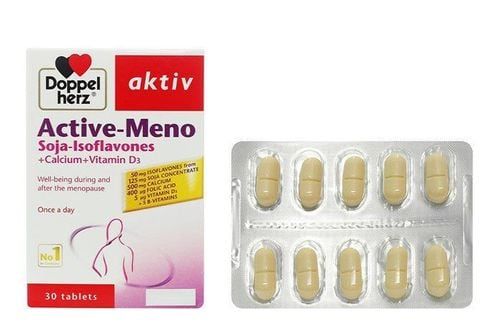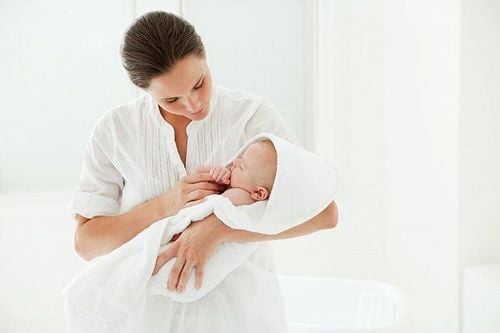This is an automatically translated article.
Androgen alopecia is the most common hair loss in both men and women. Although this disease does not pose a threat to health, it can greatly affect the mental life of the patient. If not treated early, hormonal hair loss will progress to more serious, even permanent baldness.
1. What is androgenic alopecia?
Androgen alopecia (androgenic alopecia) is an inherited condition that tends to affect both men and women. Men with this condition, commonly known as male pattern baldness, can experience hair loss as early as their teens or early 20s. This type of hair loss in men is generally characterized by a receding hairline and gradual loss of hair from the oily top or scalp at the front.For women with androgenic alopecia this is known as female pattern baldness. Hair will gradually fall out and become thinner as women enter middle age (from 40 years old and above) and the amount of hair loss will be most in the crown area.
In general, androgenetic alopecia should not affect your overall health too much. However, it can upset the spiritual life, making the sufferer feel less confident when communicating with those around them. In the long run, this can lead to stress and fatigue for the patient.
2. Common symptoms of androgenic alopecia
Depending on each type of hormonal hair loss, there will be different manifestations, including:
2.1 Androgen alopecia in men This is the most common type of hair loss in men, especially those who are in middle age. With increasing age, testosterone hormone levels in men decrease markedly, accompanied by a strong increase in the hormone dihydrotestosterone. An abnormal increase in the hormone dihydrotestosterone greatly affects the binding of the receptors in the hair follicles. This makes it difficult for men's hair follicles to grow normally, or even stop growing altogether, making hair easy to fall out but difficult to grow back. Hormonal hair loss in men is also a major cause of male pattern baldness.

Rụng tóc nội tiết tố androgen có thể gặp ở nam giới
The hair is gradually falling out and gradually thinning The hair tends to fall a lot in the forehead-temporal area and the M-zone in front of the forehead Hair in the occipital area The head is not affected 2.2 Androgen alopecia in women The female body also produces a small amount of the hormone dihydrotestosterone, so the incidence of androgenic alopecia in women will be lower than in men . Subjects susceptible to this hair loss are usually women in middle age or in perimenopause onwards.
Some of the most common symptoms in women with androgenetic alopecia , include:
Hair thinning and loss over time Hair tends to fall most at the crown of the head and rarely falls out in the area of the front of the forehead like in men The hair in the hair loss area on the head becomes thinner and thinner
3. What causes androgenic hair loss?
Currently, researchers have not found the exact cause of androgenic alopecia. However, there are two main factors that are considered to be related to this disease, including:
Genetic factors: This is considered the leading cause of androgenic alopecia, especially for men. According to research, people with a family history of hormonal hair loss are twice as likely to develop the condition as other people. Hormonal factors: An abnormal increase in the enzyme 5 alpha-reductase in the body is considered to be the main cause of hair loss in both men and women. This enzyme plays a role in converting the hormone testosterone to dihydrotestosterone. Therefore, when the concentration of the enzyme 5 alpha-reductase increases rapidly, it also causes this metabolism to take place abnormally. In females, deficiency of the neurotransmitter P can also cause hormonal alopecia. This neurotransmitter has the ability to inhibit and slow down the division of hair keratin cells.

Rụng tóc nội tiết tố androgen do yếu tố nội tiết gây ra
4. Treatments for androgenic alopecia
Treatment for androgenetic alopecia is a long process and requires a great deal of patience from the patient. At present, androgenic alopecia is mainly treated with drugs and surgery, namely:
Treatment of androgenic alopecia with drugs: The doctor may give the patient a number of drugs that help inhibit the growth. 5-alpha-reductase enzyme to reduce the level of hormone dihydrotestosterone in the body. Androgen hair loss medications include oral medications (Finasteride, Spironolactone, Cyproterone acetate, Dutasteride) and sprays such as Minoxidil. For men, it is recommended to combine the use of both Minoxidil 5% spray and oral medications about twice a day to treat male pattern hair loss. For women, it is recommended to use a spray with a concentration of less than 2% and can be combined with some other drugs about 2 times a day. Hair transplant surgery: In case the drug treatment does not bring the expected results, you can choose the hair transplant surgery method to quickly help the beautiful hair back.
5. How to prevent hair loss recurrence?
Incomplete hormonal hair loss treatment can lead to disease recurrence. Here are some ways to help you prevent hair loss from coming back, including:
Avoid putting too much pressure on your hair, such as tugging, pulling, wearing tight hats or tying your hair too tightly. Limit the use of curling, curling or styling machines Quit smoking Consult your doctor before using certain dietary supplements as they can cause hair loss Summary of hair loss Androgen hormone, patients need to go to the hospital immediately to be checked by a doctor and have timely intervention. Because if left for a long time, it will be difficult to treat and make the patient self-conscious about their appearance.
For the situation of hair loss, currently Vinmec International Hospital has applied the treatment of hair loss with local injection of the lesion very effectively. The treatment of hair loss by local injection is done in a sterile environment, safe for the patient.
All procedures of examination, examination and treatment are always performed by a team of specialized Dermatologists combined with modern equipment. Therefore, customers are always satisfied with the results after each treatment ends.
Please dial HOTLINE for more information or register for an appointment HERE. Download MyVinmec app to make appointments faster and to manage your bookings easily.
Reference source: webmd.com












